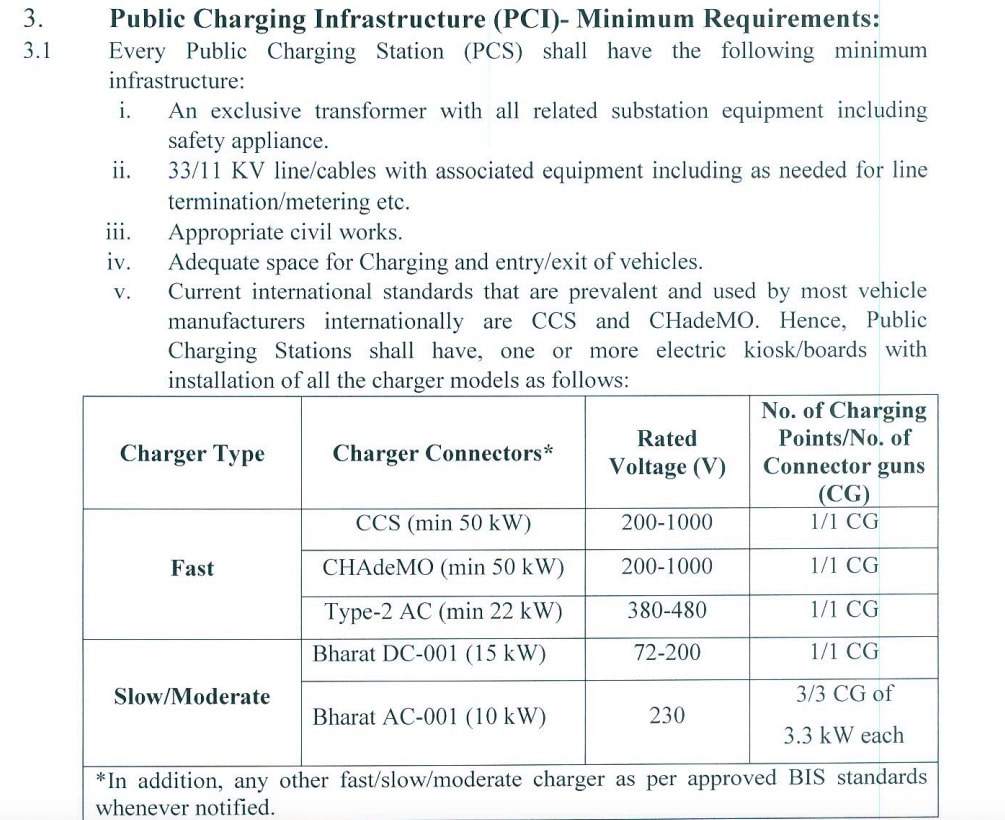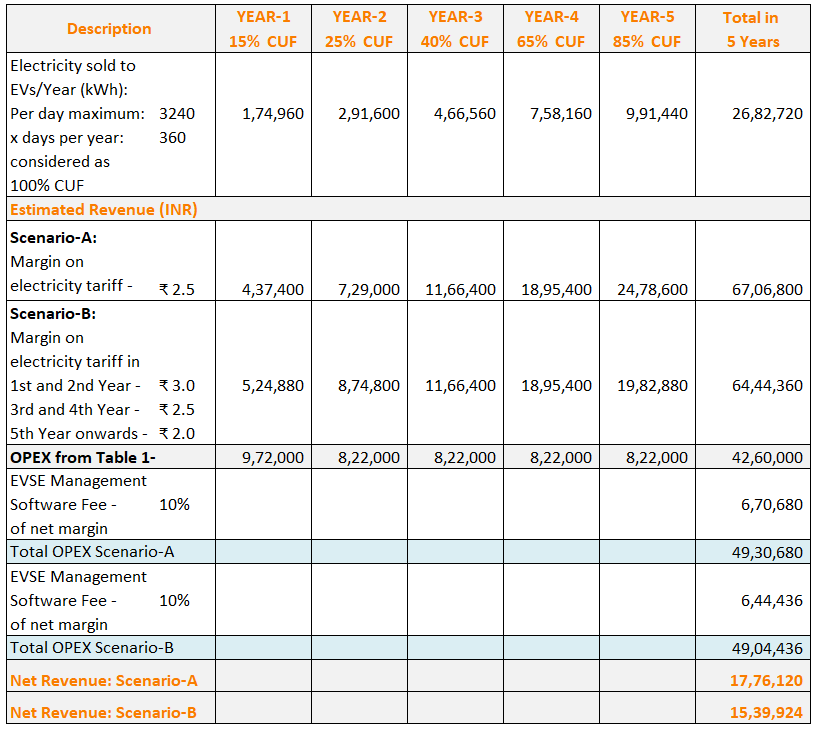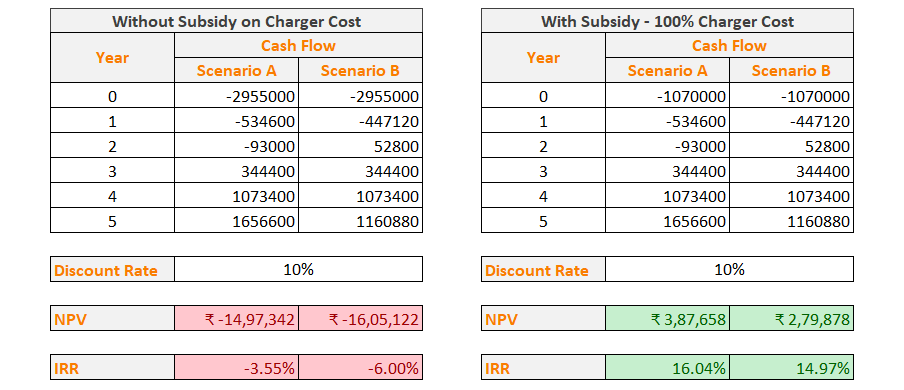A typical 50 kWh DCFC costs over Rs 1.5 million. Since present models of EVs sold in India cannot be charged above 1C rate and batteries are 11kWh to 25kWh capacity, investment in DCFC of over 25 kWh would yield unappealing returns, unless manufacturers roll out electric cars with batteries capable of fast charging with DC output in the range of 400-500V or higher. This will eventually increase the capacity utilization at PCS and enhance revenues for charging infrastructure providers, making investment in a public charging stations an attractive option.
The IS:17017-1 published by BIS in August 2018 recommends both CCS-2 and CHAdeMO. In 2017, a Committee constituted by Department of Heavy Industries (DHI) issued Bharat charger specifications for AC and DC chargers: Bharat EV Charger AC001 & DC001. These are slow chargers with DC output below 120 Volts. BIS has agreed to retain these standards which are supporting the EVs presently operating in India. These are expected to wither away as new EVs are rolled out with batteries capable of fast charging with DC output in the range of 400-500V or higher.
All standards will co-exist in India: CCS-2, CHAdeMO and the Bharat chargers. Tesla cars, according to recent reports will use CCS standard when launched in India.
The status can be summarized as:
- Two wheelers come with small size batteries which in many cases can be pulled out and taken to homes/offices/shops and charged from normal wall sockets; or can be connected to any PCS.
- Three wheelers are ideal candidates for battery swapping. In this scenario, batteries may be charged in a large industrial scale facility and charged batteries are trucked to points of 3-wheeler concentration where a 3-wheeler driver can swap the used battery with a fully charged one. Alternatively technology proprietors may install swap stations at a PCS. 3-wheelers could also be charged at any PCS.
- Buses with battery sizes >100kWh would be sold with proprietary charging standards recommended by the battery manufacturer. These batteries will cost several million rupees and it is not advisable to charge from any PCS. Bus operators will install the charging devices supplied (or recommended) by the bus manufacturer at bus depots and bus depots as required.
- Present models of electric cars come with various sizes of batteries - 11kWh (Mahindra e20) to 40kWh (Nissan Leaf) to >90kWh (Tesla Model S). These EVs require DCFCs for fast charging. The whole issue of inter-operability of EVSE for different EV models is essentially limited to cars.
The Capex and Opex of a PCS comprising of minimum infrastructure required as per the GoI notification are estimated below:
**Land lease rental is assumed to be low as per Delhi EV policy guidelines on providing land at bare minimum lease rentals to charging infrastructure providers.
Revenue projection from the PCS business is calculated in the next table based on the following assumptions:
- 20 hours of charging operations for 30 days/month
- Capacity Utilization Factor (CUF) of PCS setup considered at 15% for Year-1, 25% for Year-2, 40% for Year-3, 65% for Year-4 and 85% for Year-5 (optimistic scenario)
- Electricity tariff to the DISCOM is considered as pass through to consumer
- A margin of Rs 2.5 on electricity tariff is considered in Scenario-A
- A margin of Rs 3 in first & second year, Rs 2.5 in third & fourth year and Rs 2 from fifth year on wards is considered in Scenario-B
- EVSE Management Software fee considered @10% of net margin on electricity tariff
In the present scenario, PCS business is not viable for individuals/entities to invest.
The government may fail to encourage third parties to set up public charging stations to accelerate electric mobility adoption. However, in case of Delhi, as per Delhi Electric Vehicle Policy, GNCTD will provide a capital subsidy covering cost of chargers and installation expenses. Considering the cost estimates in Table-1, if 100% cost of chargers is subsidized, the IRR on setting up a public charging station in Delhi makes it an attractive investment choice.
Table 3 - NPV & IRR of non subsidized PCS vs 100% charger cost subsidized:
Also, it will be difficult to build EV charging network in India as a standalone business. Innovative business models to incentivize the public charging infrastructure (PCI) providers and government will be required.
Bharat EV specifications for AC and DC charging - Everything you need to know!







